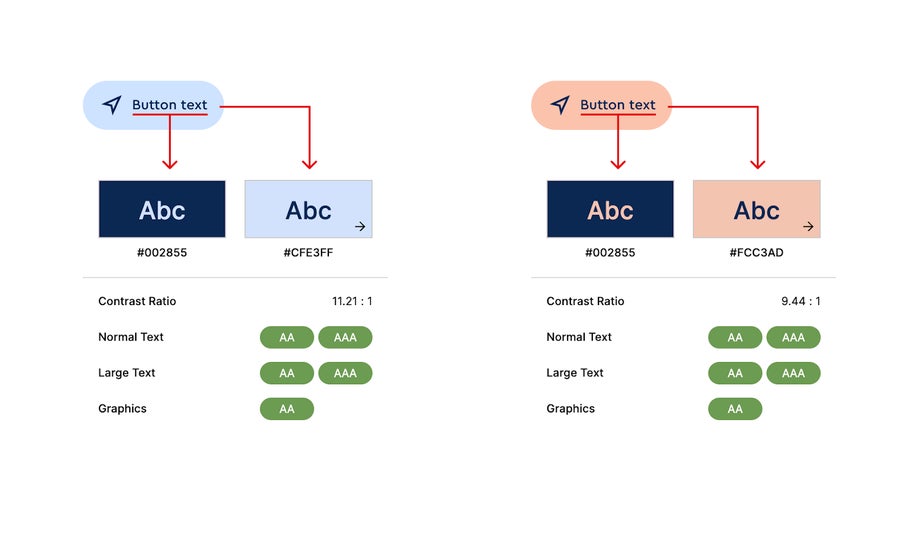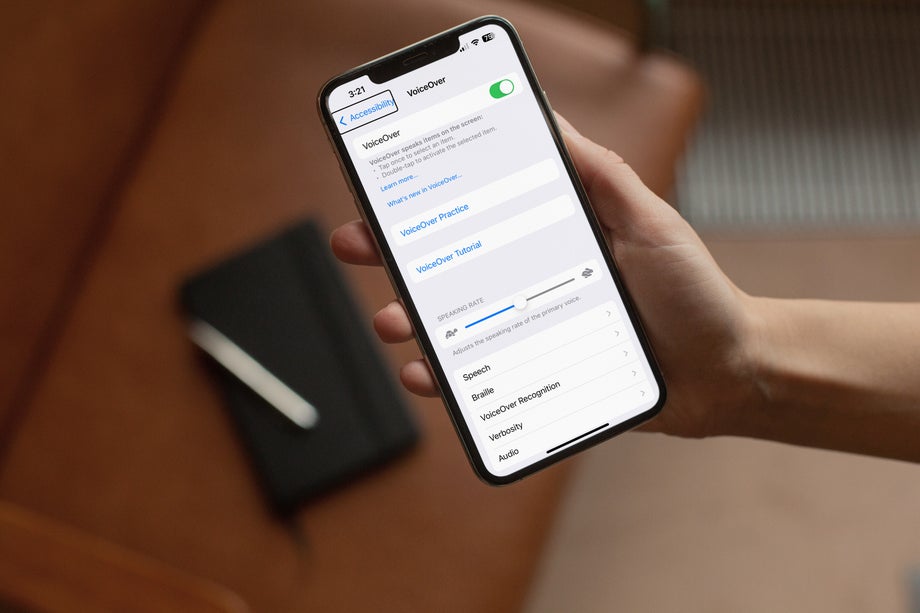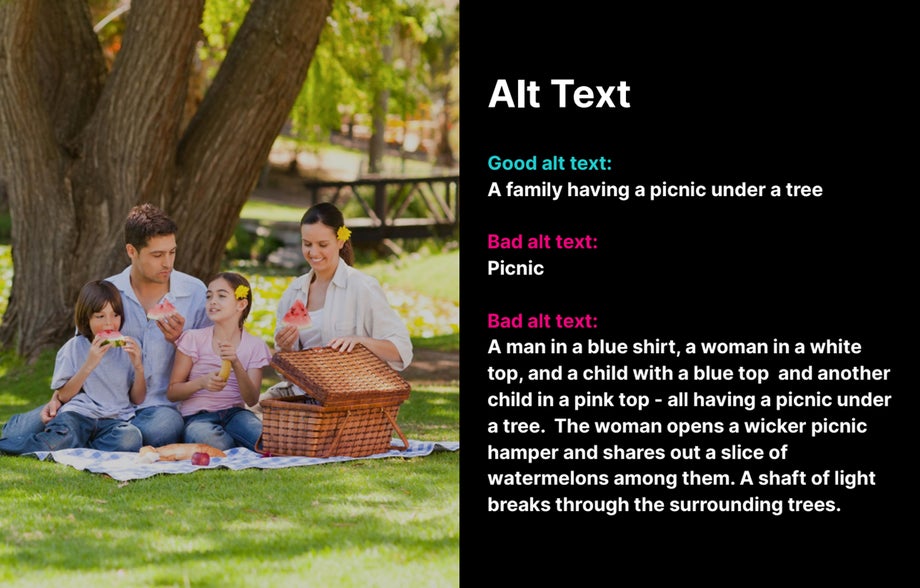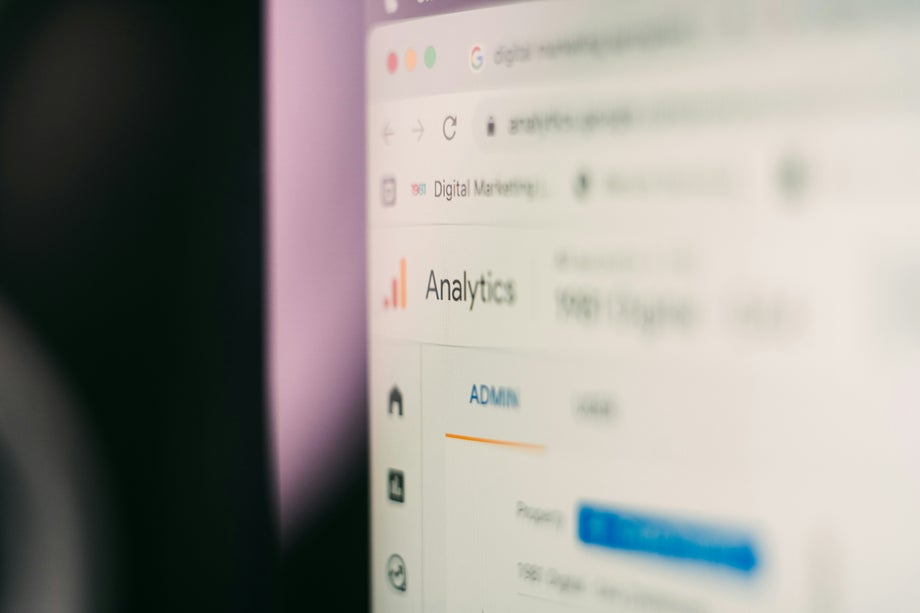

21.01.20257 mins read
The deadline for the EU Accessibility Act is just months away. As of June 2025, websites and other digital products will need to be accessible for everyone, regardless of ability or age, not just because it is the right thing to do but because it is the law.
If you were to complete an accessibility audit on your brand’s digital assets today, would you pass?
And if there are gaps or failures, who would you expect to fix them?
And that’s sometimes where it can get complicated. Who is responsible for ensuring an inclusive online experience?
The answer is everyone.
Creating accessible products isn’t just the responsibility of one person or team—it’s a shared task across all disciplines involved in building the product. From product managers to developers, each role has specific actions to ensure accessibility is embedded into every stage of the process.
Product managers (PMs) are responsible for defining the product vision and setting priorities. Therefore, they are in the unique position of being able to make sure accessibility is treated as a core feature, not just something that’s added at the end.
PMs must:
- Include accessibility in the product roadmap to ensure it becomes a fundamental part of the long-term product strategy.
- When writing user stories, embed accessibility requirements within them. For example, a story might say, "As a user with a visual impairment, I should be able to navigate the site using a screen reader."
- Align stakeholders on the importance of accessibility. They must advocate for the time, budget, and resources necessary to implement and test accessible features throughout the project.
- Monitor progress by creating specific KPIs or metrics to track how well the team is doing on accessibility goals. One KPI that we use here at All human is to confirm that all new features pass accessibility checks before they are deployed.
When PMs make accessibility a priority from the beginning, ultimately, it saves time and resources. Retrofitting accessibility features is typically more expensive and time-consuming.
Designers do more than make something look good. They are responsible for crafting user experiences that work for everyone, regardless of ability or device.
Therefore, they must
- Ensure that the chosen colour schemes are accessible, paying attention to the contrast between text and background, especially for visually impaired users. This can be checked with tools like Stark or WCAG Contrast Checker.
- Create interfaces that are fully navigable using a keyboard alone, ensuring that users who rely on assistive technologies or who have motor impairments can still use the product effectively.
- Make site/app layouts simple and intuitive. A clear layout with well-structured information makes content more accessible for users with cognitive disabilities. Additionally, designers must ensure that all form elements, buttons, and images are clearly labelled so that screen readers can accurately interpret the interface.

I’ve been working as a designer for many years and can say from experience that everyone benefits when you create something that anyone can use. Simplifying layouts, improving clarity, and ensuring navigability, results in a better overall experience for all users.
A great design is only part of the battle. Developers are crucial in ensuring that the accessible designs created by UX/UI teams are realised in practice. Their code ultimately enables or hinders accessibility, so they must implement it correctly and test it thoroughly.
- To support accessibility, developers should use semantic HTML elements, such as <button>, <nav>, and <header>. This ensures that assistive technologies, like screen readers, can accurately interpret the content.
- When dealing with dynamic content, developers should also implement ARIA (Accessible Rich Internet Applications) attributes, which can help communicate the function of interactive elements to users who rely on assistive technologies.
- Developers also need to ensure that every interactive element in the interface is operable using only a keyboard. This means setting focus states properly and testing the navigation experience without a mouse to confirm it works as expected.
- In addition, it’s important for developers to manually test the product using screen readers like NVDA, JAWS, TalkBack or VoiceOver, as this helps ensure that users with visual impairments can easily navigate and understand the content.

From working with developers, I know they share the same sentiment as designers- writing code with accessibility in mind leads to cleaner, more maintainable code overall, and it also makes the product more resilient and robust.
Typically, we go to a site or an app to either do something or learn something. So, content writers must ensure that the copy they’ve lovingly crafted is clear, simple, and easy to understand for all users, including those with cognitive disabilities.
They should
- Focus on creating content that is straightforward and free of unnecessary jargon. By breaking up large blocks of text into smaller, digestible sections and using plain language, writers can make content more accessible. This approach also benefits users with cognitive impairments who might struggle with overly complex text.
- Provide descriptive alt text for all images. Alt text allows users who rely on screen readers to understand the purpose or context of an image, even if they can’t see it.
- Ensure that error messages and form instructions are clear and actionable; for instance, instead of just saying “Invalid input,” an error message should explain how to correct the mistake, making it easier for all users to complete tasks successfully.

Again, I’ve heard from content creators that when they focus on accessibility, they find that simplifying the language and structure of content not only helps users with disabilities but also improves communication for all users.
Often overlooked QA engineers make sure that every aspect of the product works as intended, and that includes accessibility. Accessibility testing should be integrated into the overall QA process and treated with the same importance as functional testing.
- One of the most effective ways QA engineers can identify accessibility issues is by using automated testing tools like Axe or Lighthouse. These tools can quickly scan the product for common accessibility issues, such as missing alt text, low contrast ratios, or improper ARIA usage. However, automated tools should be supplemented with manual testing, particularly for checking how well the product works with assistive technologies.
- QA engineers should manually test the product using screen readers and keyboard navigation to ensure that it’s fully accessible to users who rely on these technologies.
- It’s also important to test the product across multiple platforms and devices to ensure that accessibility is maintained in different environments, as some users may rely on specific operating systems or browsers due to the accessibility features they offer.
AI is everywhere and increasingly plays a role in improving accessibility, helping teams automate some of the more complex and repetitive tasks involved in making products accessible.
Some use case examples:
- AI tools can automatically scan designs or codebases for accessibility issues, such as insufficient colour contrast or missing alt text. By identifying these issues early, AI can help developers and designers fix problems before they become more costly.
- AI has made a significant impact in generating alt text for images. AI models can efficiently analyse images and create descriptions for alt text, which is particularly helpful when dealing with large volumes of content. Although human review is still necessary, AI can significantly speed up the process.
- Natural language processing (NLP) models can also assist in making content more accessible. These AI models can simplify complex language, making it easier for users with cognitive disabilities to understand. They can also summarise large amounts of content, making it more digestible.
- AI-powered speech recognition tools can improve accessibility for users with motor impairments by allowing them to navigate products using voice commands.
- AI can also offer real-time feedback to developers and designers, suggesting improvements for accessibility as they build the product, which helps teams stay proactive.
I’m sure we’ll soon see more examples of where AI can help ensure digital accessibility….so watch this space.
Our work on VisitDublin won the Universal Design Award.
Take a look: https://www.youtube.com/watch?v=weP_idO4xxs

Time is running out: How to ensure your digital assets comply with the new EU Accessibility Act.


